Well my family has made our move, and I will certainly be sharing all about my new teaching experiences in Australia! However, since there are still a couple of weeks before that time, I have a post I want to share from Michigan.
I had a personal goal this year of building perseverance in my students. I wrote a bit more about it here. I wanted to give my students a team building activity, which was designed to challenge their perseverance. I used to run low ropes challenge courses at a YMCA camp, and we worked with different initiatives. The challenges were possible, but were specifically designed to be difficult. A group needed to work collaboratively to be successful, and it was often the case that the challenges brought to light previously unnoticed aspects of the participants’ personalities. If not that, it highlighted how important it is to listen to all of the input from the group, and to take advantage of the skills that various participants have.
Knowing that there is so much potential for critical thinking, problem solving, and perseverance, I wanted to bring this sort of activity into my classroom. I did know that I would face a few challenges right away. First, the ideal group size for this sort of thing is about twelve people, and of course that is not the class size I had. Next, it absolutely works best when the facilitator can observe and intervene as necessary throughout the process. I knew I would need to have two groups going at the same time in order to do this in class, and that simply is not ideal. If you decide to give this a try, I would recommend getting someone else to facilitate the other group. However, you need to be sure that they are clear on their role so that the integrity is maintained.
I decided to run two challenges, one of which was quite involved, and the other of which was a bit simpler. I explained both challenges to the entire group, and they were completely engaged the entire time. I then split them into groups and had them get started.
When running a team challenge, the facilitator needs to hold the group accountable for the rules. Ideally you are out of the process, observing and letting the group work through problems. However, you need to adapt depending on what you see. If a group is simply falling apart, you may call a quick meeting. If a group is not following the rules, you need to start them over. If they are doing well, but are taking an incredible amount of time, you may need to adjust the conditions of the challenge to help them along. It is very dynamic, running with the experience. These are the challenges I ran:
1. Lava Pit – This was the more in depth, exciting challenge. I had to carefully set this up before my students arrived. I used our big blocks and boards. I also wanted to be sure that it would be safe (especially since I aways harp on my kids not to stand on the blocks), so I hot glued some rubber matting (drawer liners cut apart) on the ends of the boards to ensure that they would not slip.
I then created a path from one end of my rug area to the other. I placed large blocks strategically so that some could be connected with one board, and some needed two boards in a T formation to create a path. I actually marked the spots on the carpet with tape to ensure they were all set.
The challenge to the group was to get every member of the group from one side of the lava pit to the other. They could stand on the lava rocks (big blocks), or boards, but they could not step into the lava (on the rug.) They also could not step from rock to rock. Instead they had to connect the rocks firmly with a board in order to cross. The boards also could not touch the lava. Finally, they only had three boards to use, and they could not walk the boards back to any participant still needing to cross (they would need to carry them back through the lava rock maze).
2. Balance Beam – This one is a bit simpler. The kids in the group had to stand on a balance beam. Once on the beam, they could not step off the beam. (If anyone did step off, they had to go back to their original position.) Once on the beam, I assigned every child a number, which I taped to their shirt. They had to organize themselves in sequential order (another great task!) without stepping off the beam.
Once I explained all the rules, I let them go. It is truly amazing to watch. Some groups jump right in, others plan. Some kids eat the challenge up, while others don’t care at all. In this situation, with two groups going, I had to jump back and forth to keep them going. Truthfully, the balance beam task is much less interesting. That group lost steam quickly. I did extend it for them a little by suggesting a few things to try, and they did get a bit of an experience. Here we talked about holding on to one another to help the other student pass by without falling off the beam:
However, in the end I called that group over to observe and support the lava pit group. This actually worked wonderfully! One of the observers ended up facilitating the other group’s success! Because there are no hard and fast rules, I went with this and let him get involved, and it really was the key to the whole thing.
After the challenges finish (either because they succeed or because you have to stop them due to time) it is critical to debrief. We had some great discussion that really got to the goal of perseverance. For example, I had one student who was really involved, but at one point decided to cheat. He stepped from rock to rock, and said, “I did it.” I went to him and asked if he really felt that he succeeded, and why or why not. In the end he went back and did it properly. His response when finishing that time was one of intense pride. As a group we discussed why he seemed to feel differently the second time around. Another student said that it was because he followed the rules, and that made it a real challenge. That sort of discussion and grass roots discovery is simply priceless.
Have you ever done any team building challenges with your class? What tips do you have to make it successful, especially with a big group?



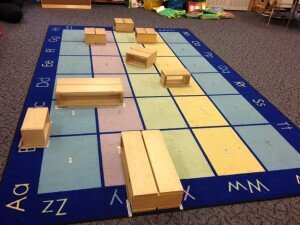
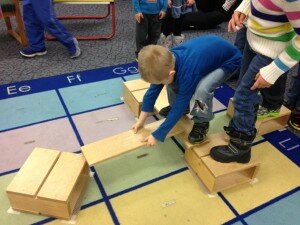


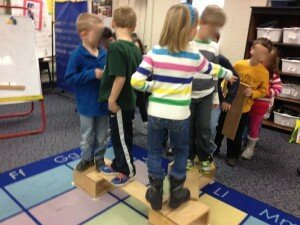
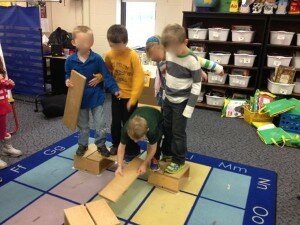
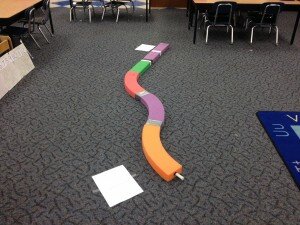



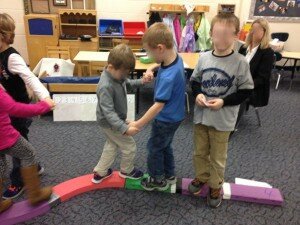
Comments are closed.